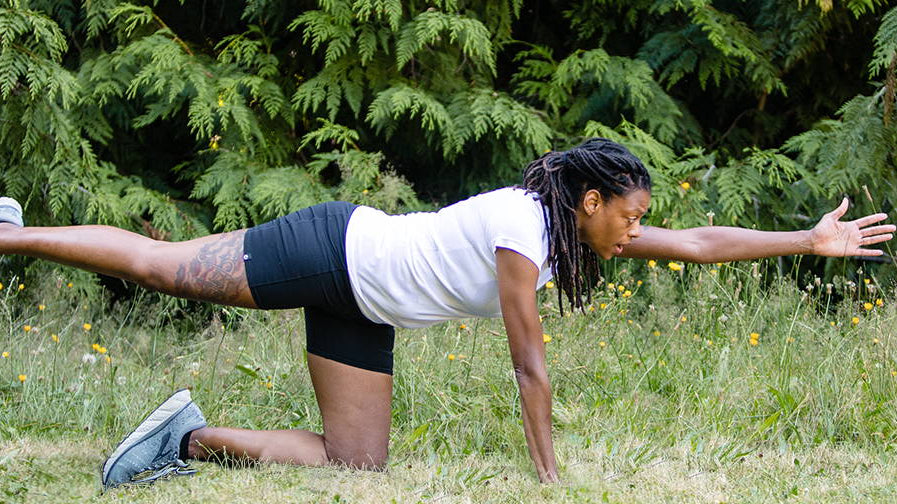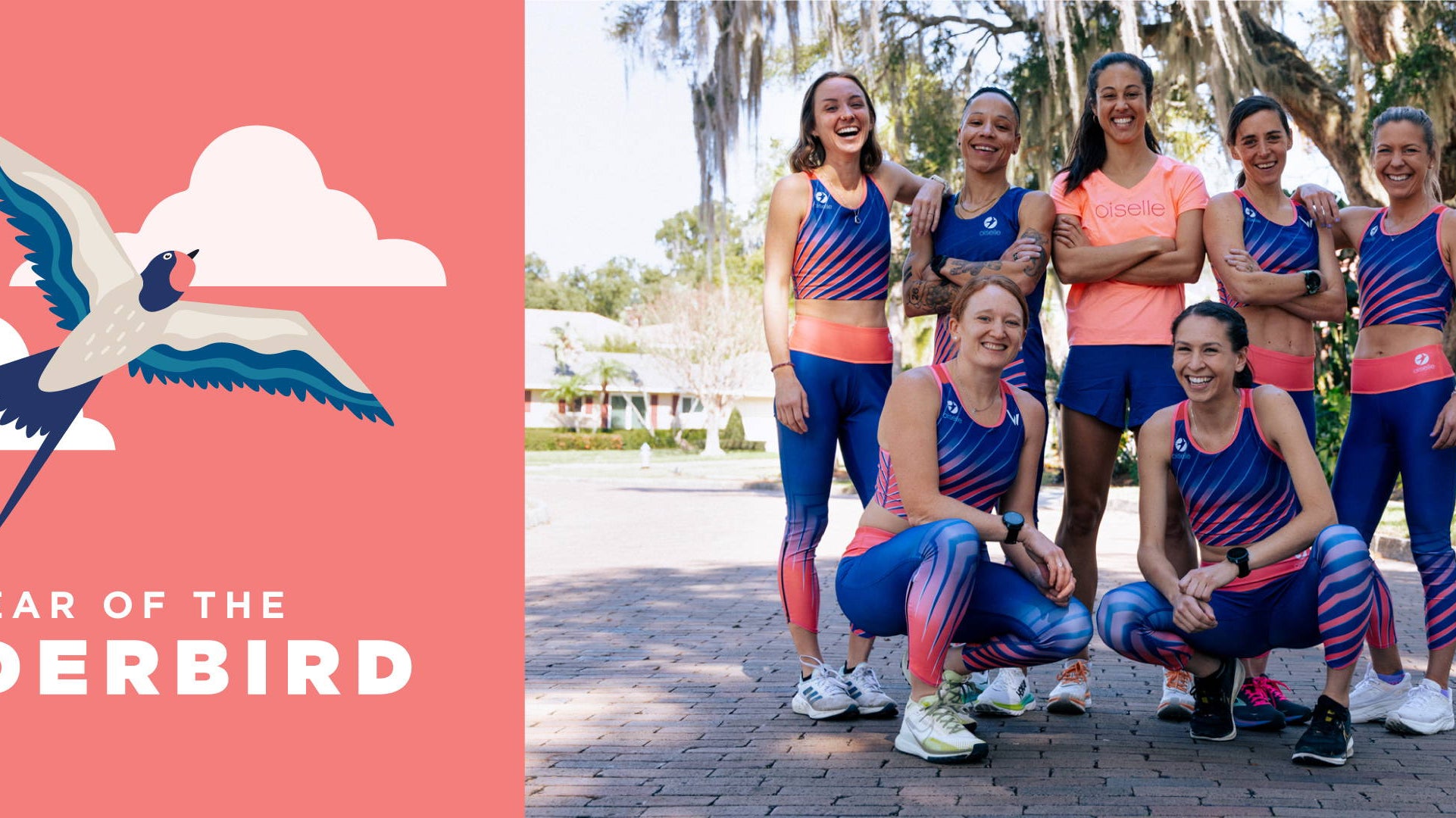Allison Krausen is one of our Haute Volée runners specializing in the half marathon and marathon. She lives in Colorado and understands how to train in cold weather and shares some of her tips for weathering the elements:
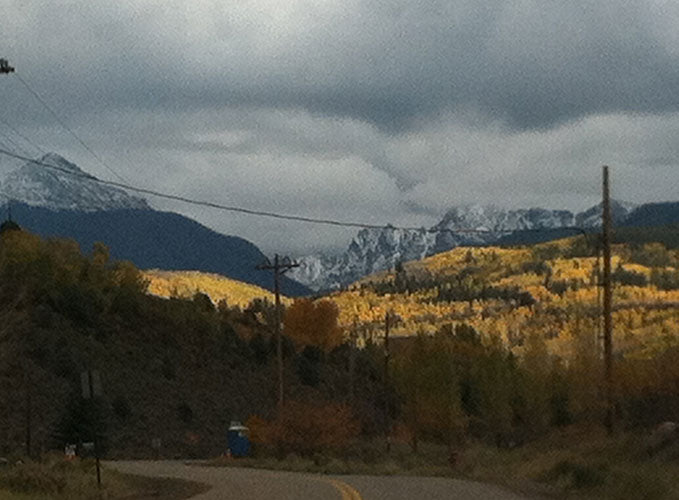
It is not without a twinge of melancholy that I’m announcing and thus hereby embracing the arrival of winter in my neighborhood. We have enjoyed a beautiful, colorful and extended fall season, teased by winter with occasional, short-lived dustings of snow. Though the hillsides and peaks above tree line have stayed white, the valley floor has been ruled by warmer sunshine, and the snow’s stay had been temporary, until today. This morning I got a wake up call from winter while driving the 100 miles from our home in Colorado’s Vail Valley to Denver in an early morning blizzard. The semi-trucks took over the road at the bottom of Vail Pass, chaining up for the slippery drive. There were tow trucks on the prowl, waiting not so discreetly on the side of the interstate for the call from any one of the dozens of cars that had slid off the side of the road, many of them completely overturned. Fortunately for me, it was my husband in command of the white-knuckled drive, as we endured our own fair share of fishtailing and not so anti-lock breaking before finally arriving safely.
Despite the hairiest of conditions at times, the last 10 years of living in Colorado, I have, through experimentation, learned how to be an outdoor runner just about every day of the year. Of course winter presents the most difficult and unpredictable of conditions. But for any runners moving to a new climate or interested in learning how to face their own version of winter, I thought I’d share a few of my survival tricks. In my experience, there are two keys to dressing appropriately for winter running: traction and temperature.
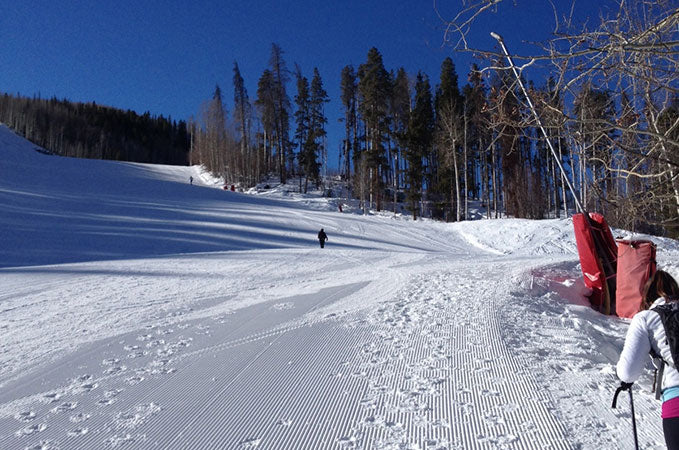
Traction:
What I wear on my feet has everything to do with the consistency and predictability of the surface conditions. Unless we’ve enjoyed a string of sunny days, when I know for certain that any south facing streets will be mostly melted, I find myself running on a mix of snowpack, ice, and pavement. For these days, I depend on my Yaktrax. A web of rubber wrapped in a thin spiral of metal you stretch over the bottom of your shoes and strap across the top, the Yaktrax provide enough traction on ice and well-packed snow without interfering too much with gait and stability. They’re ok for a few hundred meters on asphalt, if necessary (though better on the gravel/dirt shoulder, if available), but also easily removed and carried in hand, or stuffed into a deep pocket.
If the snow is at all soft, then the Yaktrax are rendered useless and I trade up for my micro-spikes. They’re great for the often-used trails out my back door, the cross-country skiing courses (where runners are allowed), and the groomed trails on the ski mountain. Because they are also removable, they work well for one of my favorite workouts on Vail Mountain, which involves parking a distance from the resort, jogging to the loading area at the base of the ski mountain, strapping on the spikes for a run to the top of the gondola, and then riding (for free!) back down to the base.
For real ‘off-roading’ in fresh snow or areas that have less consistent traffic, I break trail in my aerobic snowshoes. Designed for racing, these snowshoes are attached directly to my running shoes, so are much less bulky and encumbered with straps than the kind used for hiking. Despite this, because they are really just pontoons for snow, they do require a slightly wider gate and much more exact timing. Fortunately, the snow provides a relatively soft landing for the times I am clumsy and end up catching my heels or crossing my tips into a face-plant.
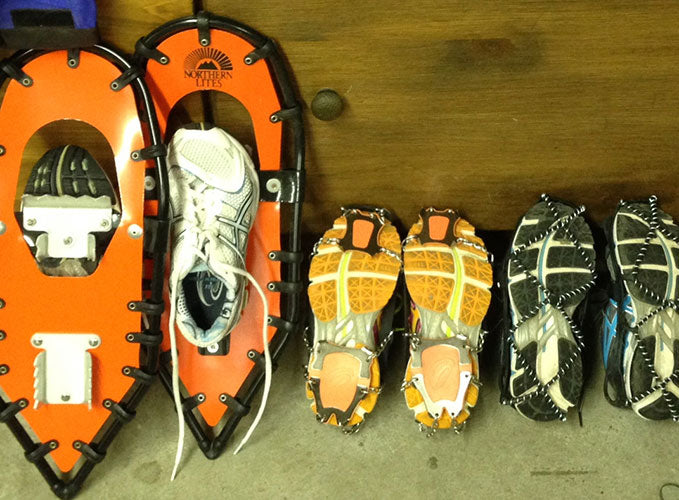
Temperature:
I walk out the front door at over 7500 feet elevation, and there is not a flat mile in any direction, so during any run I experience significant fluctuations in temperature. For me, the secret to managing this is to wear multiple layers, with zippers, and to have a few key pieces that are easy to take off and store.
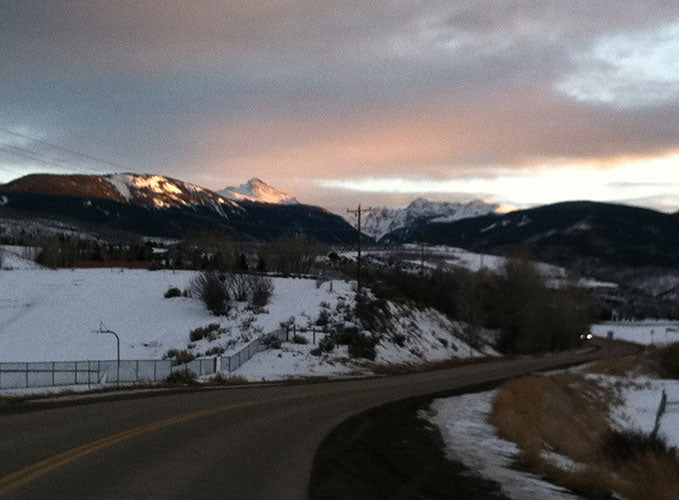
I can survive any conditions if I am able to keep my core and my hands warm. My favorite cold-weather layer is the Oiselle Mac Jacket. It is the warmest layer I ever need and is great for wind protection. The bright color gives me confidence that I will be seen by cars on the slippery road or skiers coming down the mountain. On winter’s coldest days, I will wear two pairs of thin ski glove liners and mittens on top. And I’m never afraid to throw in a pair of instant hand warmers. Sometimes I’ll even use a Thermacare instant heater on my low back (both are also excellent for staying warm on a cold race morning as well). These are easy to shed and store in the Mac Jacket’s back pocket as I warm up.
For my face and head, I borrow from the ski industry. I have found that a neck gaiter with goggles works best for days when I’m at risk for frostbite, as it protects my face and eyes without fogging up. When it is that cold, I will wear a ski hat as well. But most days, it is too warm for a thick hat, so I will wear an Oiselle Superfly Cap. We have so much exposure to the sun at altitude, so I was thrilled when Oiselle released the Superfly Cap (I now own five). They are the perfect size, adjust tightly for high winds, and have great ventilation. I pair this with sunglasses and a fleece headband. The headband becomes too warm on most days, so I’ll take it off and wrap it around my wrist. And even with the visor, I still always wear sunscreen. In winter, I use an intense moisturizer with SPF for protection against the harsh conditions.
I have learned that the best thing to keep in mind with winter running is to be flexible and to stay tuned to my body. On the rare occasion when I get out the door and just can’t warm up when I head uphill, or feel numbness in any of my extremities, I’m not afraid to cut it short and head home. And for the most part, I leave my Garmin at home in exchange for the pride I feel in getting outside at all. Running in snow is like running in sand. It is much more about the effort than the distance.
Hope this helps you survive the elements!
Allison








